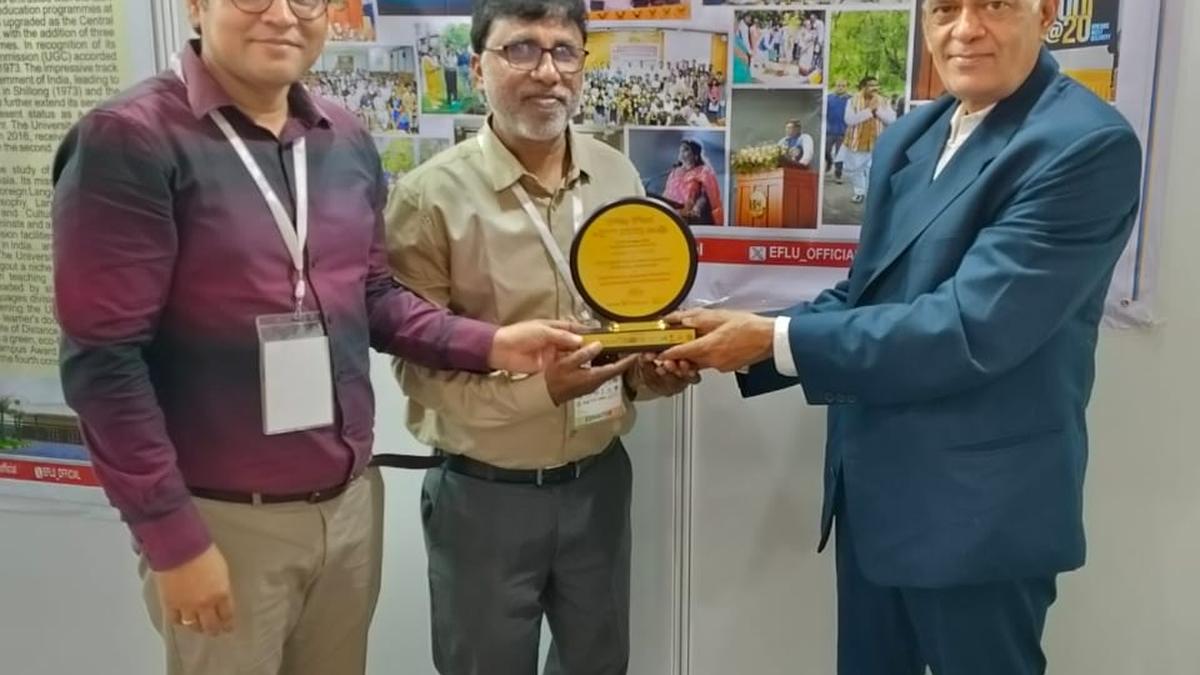A husband who refused to cry, a father insisting he didn’t need a DNA test to identify his son, a crew member’s family broken in spirit after waiting seven days for DNA confirmation. Two weeks after the AI-171 crash in Ahmedabad, psychiatrists are working through an emotional minefield to help families veering between denial and despair.

The five commonly known stages of grief — denial, anger, bargaining, depression and acceptance — are playing out in ground zero of the June 12 disaster when the London-bound Air India plane crashed into the congested B.J. Medical College complex seconds after takeoff, killing 241 on board and 29 on ground. Only one passenger survived.

Family members and relatives mourn during the funeral of Chetnaba Chavda and her husband Ranvirsinh Chavda, who died in the Air India Boeing 787-8 Dreamliner plane crash, in Ahmedabad on June 18, 2025. | Photo Credit: Reuters
The devastating air crash had shaken the city — and the people’s lives — to the core. For many, it marked the beginning of an emotional journey more harrowing than they could have imagined.
Air India Ahmedabad plane crash victims | Tales of grief and loss
Amid the chaos, the Department of Psychiatry at B.J. Medical College in Ahmedabad swung into immediate action.
A team of psychiatrists — five senior residents and five consultants — were deployed around the clock across the hospital’s Kasauti Bhavan, the postmortem building, and the Civil Superintendent’s Office.
Their mission: to support the surviving families through the mental trauma of a tragedy.

“The accident was unimaginable. Even bystanders were disturbed. Then what must be the condition of someone who lost their loved one?” said Dr. Minakshi Parikh, Dean and Head of Psychiatry at BJMC.
“If the people who heard the news were so disturbed, then it is not even within our scope to imagine the state of mind of the family members of people who lost their lives,” she told PTI.

A portrait of Nganthoi Sharma, a crew member who died in the Air India crash in Ahmedabad, is carried by her elder sister at Imphal airport where she and other family members received her remains, in Manipur on June 22, 2025. | Photo Credit: AP
With horrifying images of the crash already circulating, families poured in — numb, desperate, and clinging to threads of hope. The mention of a lone survivor sent hearts racing. Many believed —needed to believe — it could be their loved one.
“There was an uncertainty whether one would be able to identify the loved ones they have lost and wait for matching of the DNA samples for three days. In some cases, samples of another relative of the kin had to be taken. The shock would have logically led to acute stress reactions and post-traumatic stress disorder,” Dr. Parikh said.
“There was complete denial,” recalled Dr. Urvika Parekh, an assistant professor who was part of the crisis team.
“They kept asking for updates, insisting their family member had survived. Breaking the news gently, while having no confirmation ourselves, was incredibly difficult. We had to provide psychological first aid before anything else,” she said.

Sister of Lawrence Daniel Christian, who was killed in the Air India plane crash, mourns at his residence, in Ahmedabad on June 22, 2025. | Photo Credit: PTI
Dr. Parekh said the hopes of many relatives hinged on the news of a lone survivor who they felt could be their loved one.
“We had to deal with the denial and explain that nobody could have survived the horrific crash [except one who was not their relative],” she added.

She said the relatives initially didn’t want counselling as they were devastated and angry over the lack of information. “It was also difficult to accept the truth without seeing the bodies of their loved ones. Counselling aided them at this critical juncture,” she said.
A man, Dr. Parekh recalled, sat speechless, refusing to cry or talk. His wife had died in the crash.
“There was immense guilt —survivor guilt [that he is alive and his wife died]. We gave him anti-anxiety medication to help ease the immediate stress. Eventually, he began to speak. He talked about their plans, their memories. It was catharsis. We didn’t interrupt — we just let him speak and communicated through silence and empathy,” Dr. Parekh said.

Family members and relatives during the funeral of Inayat Ali Saiyed, his wife Nafeesabanu Saiyed, daughter Taskinbanu Saiyed and nephew Vaki Ali Saiyed, who were killed in the Air India plane crash, at Khanpur in Ahmedabad on June 21, 2025. | Photo Credit: PTI
She said in such cases empathetic listening played a crucial role.
“We were managing their anger, outburst, and their questions like ‘Why us?’ [why did it have to happen to us],” she said.
For many, the most unbearable part was the wait. DNA confirmation could take up to 72 hours, sometimes longer. In the meantime, grief festered, fuelled by uncertainty. Some relatives insisted they could identify the bodies themselves.
“There was one father who kept saying he didn’t need DNA tests — he could identify his son by his eyes,” Dr. Parekh shared.
Ahmedabad plane crash Lone survivor discharged from hospital; attends brother's cremation in Diu
The mortal remains of Vishwas Kumar Ramesh’s brother, Ajay, were handed over to the family in the early hours of June 18 after a DNA test confirmed his identity | Video Credit: The Hindu
“We had to gently discourage that. Seeing their loved ones in such a state could trigger PTSD [Post-Traumatic Stress Disorder] and depression. We told them: it’s better to remember them with a smile than with charred remains.” The team worked through the five stages of grief, though rarely in a linear way.
“People cycle through these stages. Someone might accept the loss in the morning and fall back into denial by evening,” said Dr. Parekh. “So we mourned with them. That was part of the therapy”.
Dr. Parekh stays in one of the buildings on the residential campus where the plane crashed after take-off. Her building didn’t suffer any major damage.
Sleep-deprived and broken by anticipation, many began to unravel.
One Air India crew member’s family waited seven days for DNA confirmation. “The exhaustion, the helplessness — it broke her mentally,” said a relative. “But the counselling helped. Those sessions were our only anchor.” “A calm voice, the right amount of information, and simply being there — these saved a lot of families from spiralling into chaos,” said Dr. Parikh.
Air India Ahmedabad plane crash: What we saw at the site in Ahmedabad
On Thursday afternoon, a Boeing 787 aircraft en route from Ahmedabad to London crashed in the BMJ Medical College campus area, just 5 km from the airport. Our reporter brings you live visuals and ground updates from the spot where the tail of the aircraft still lies embedded in a building. The area has suffered extensive damage — this includes the mess where students were gathered during lunchtime and the postgraduate hostel nearby. The crash has resulted in confirmed casualties among both passengers and local residents, including students and possibly bystanders. Rescue and recovery efforts continue. The National Disaster Response Force (NDRF), forensic teams, and aviation authorities are on the ground. The focus now shifts to retrieving the black box — both the Cockpit Voice Recorder (CVR) and Digital Flight Data Recorder (DFDR) — to understand what caused the fatal crash. | Video Credit: The Hindu



.png)
.png)
.png)
















 4 hours ago
3
4 hours ago
3








 English (US) ·
English (US) ·